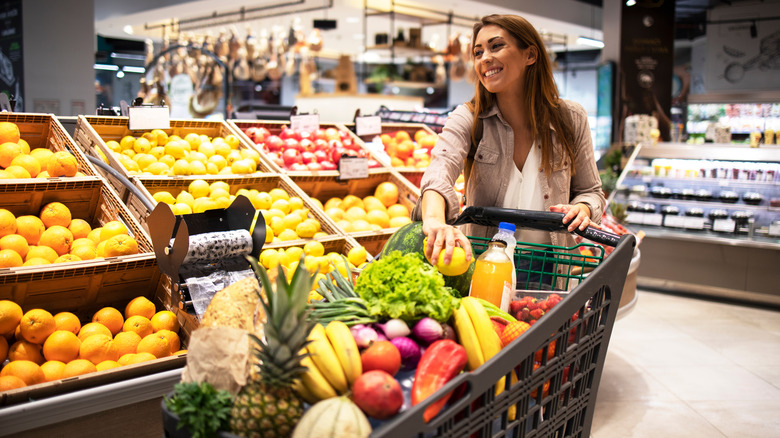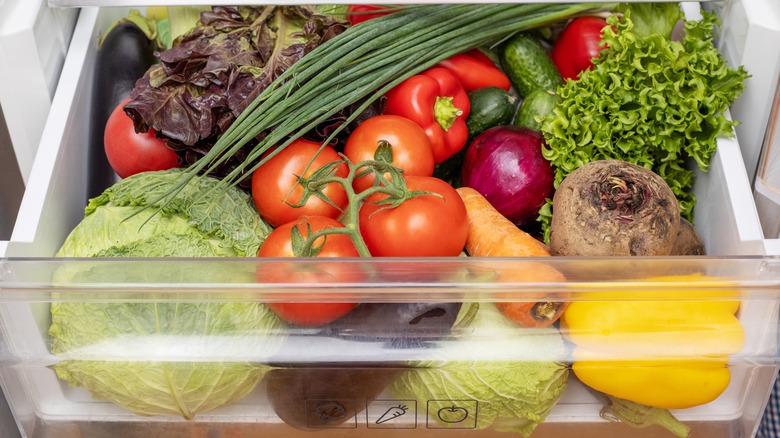The Simple Organization Tip To Avoid Over-Buying Produce
Have you ever found yourself returning from the grocery store and beginning to put away fresh produce, only to realize you already had a bag of carrots or a bunch of cilantro? Now, you're faced with the dilemma of what to do with all of those carrots and cilantro, and hoping you can use them before they go bad.
Knowing that about 14% of the food produced in the world is lost, with about 17% wasted by consumers and retailers (according to the United Nations), is just added incentive to make sure that extra produce doesn't end up trashed. One of the first things you can do to avoid wasting fresh produce is helping to extend its life by storing it properly. For example, one of the 10 mistakes made when storing produce is keeping it in the plastic containers that it came in. Cloth and muslin bags are generally better. Other tips to keeping those fresh veggies and fruits lasting longer include using water to keep them fresh, from storing herbs in water as if they were flowers to keeping carrots submerged in it.
But instead of trying to keep excess produce from going bad, wouldn't it be better to prevent buying what you don't need?
Clean and organize, then shop
Making sure you buy the right produce, as well as the right amount, begins with prepping before you go shopping, says chef Sawako Okochi. Okochi, who owns Shalom Japan in Brooklyn with her husband, Aaron Israel, told Food and Wine that it's good practice to take everything out of the fridge prior to going to the grocery store to take inventory of its contents. Also, organize the produce as it is unpacked. If it's going in the refrigerator, put the older items closer to the front and the newly purchased ones in the back, recommends writer and recipe developer Katherine Martinelli.
Consumer Reports says that taking a few minutes to organize food in the fridge as it is unpacked from the grocery bags can help to reduce food waste and the risk of foodborne illnesses. Keep in mind that warmer spots are generally the door bins and upper shelves, while the bottom shelves and deli compartments are cooler. The humidity in the crisper drawers, adds Consumer Reports, can be modified to suit the needs of the food.
But most importantly, next time you think you need a head of iceberg lettuce and a cucumber, take stock and make sure there aren't any hiding in the fridge before making a shopping list and heading to the grocery store.

